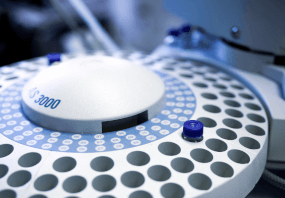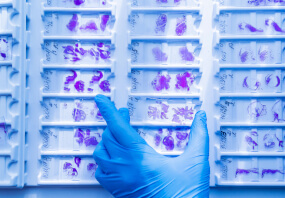General description
Cathepsin B is encoded by the gene CTSB and is located in the human chromosome at 8p23.1. Cathepsin B is a lysosomal proteolytic enzyme of cysteine protease family. It is present in all mammalian cells. It is essential for the intracellular protein turnover.
Application
Cathepsin B from human placenta has been used in the in vitro digestion of modified myelin oligodendrocyte glycoprotein (MOG). It has also been used in determining the effect of cysteine protease inhibitors.
Cathepsin B is a lysosomal cysteine proteinase which hydrolyzes proteins with a broad specificity for peptide bonds. Cathepsin B may be a useful tool in Alzheimer′s research, as it may have a role in the natural defense against the disease . Cathepsin B may be used to cleave procaspase 1 and procaspase 11, and to induce apoptosis in digitonin-permeabilized cells.
Biochem/physiol Actions
Cathepsin B preferentially cleaves at the caboxyl side of Arg-Arg bonds in small molecule substrates. Cathepsin B has been shown to degrade β-amyloid precursor protein into harmless fragments . Cathepsin B inhibition has been shown to limit bone metastasis in breast cancer .
Cathepsin B has been found to cleave procaspase 1 and procaspase 11 and to induce apoptosis in digitonin-permeabilized cells. Translocation of cathepsin B from the cytoplasm to the nucleus contributes to bile salt induced apoptosis of rat hepatocytes. Levels of cathepsin B in PC12 cells significantly decrease 12 to 24 hours after apoptosis is induced.
Unit Definition
One unit will liberate 1 nanomole of 7-amino-4-methylcoumarin from Z-Arg-Arg 7-amido-4-methylcoumarin per min at pH 6.0 at 40 °C.
Physical form
Lyophilized powder containing phosphate buffer salts
Preparation Note
Dissolves in water at 1 mg/mL concentration, yieliding a clear solution.
- UPC:
- 12352200
- Condition:
- New
- Availability:
- 3-5 Days
- Weight:
- 1.00 Ounces
- HazmatClass:
- No
- MPN:
- C0150-10UN
- CAS:
- 9047-22-7












